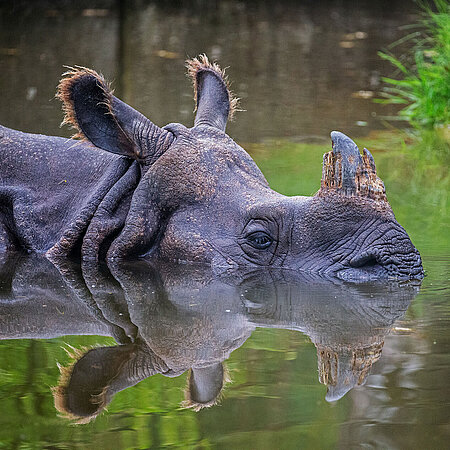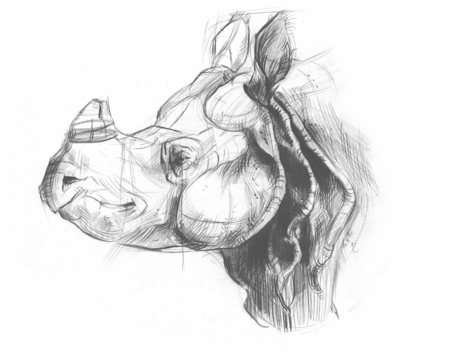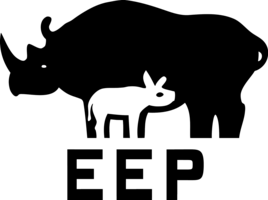Indian Rhinoceros
Rhinoceros unicornis

- Family
- Rhinoceroses (Rhinocerotidae)
- Weight
- ♀ 1,6 t, ♂ 2,2 t
- Habitat
- Open grassland and swamplands
Supposed remedy
The rhino horn in its powdered form is prescribed as a wonder cure for fever, pain and even cancer in traditional Asian medicine. In reality, it is made of keratin – the same material as our fingernails – and has no proven medicinal effect. Yet the demand for rhino horn is the main cause of poaching and endangerment to the population. On Asian black markets it is worth more than its weight in gold.

Pachyderm with a fi ne nose
The Indian rhinoceros has a grey-brown up to 4 cm thick skin with folds, which has the appearance of a suit of amour. They love to spend hours wallowing in mud or water holes to keep cool. The mud also serves as a natural insect repellent and sunblock. Indian rhinos have relatively poor eyesight, but excellent senses of hearing and smell.
The Indian rhinoceros is under threat due to illegal poaching and habitat loss. Today, only about 3,000 individuals remain in the wild in small areas in India, Bhutan and Nepal.
Distribution


Hellabrunn Zoo participates in the European Endangered Species Programmes